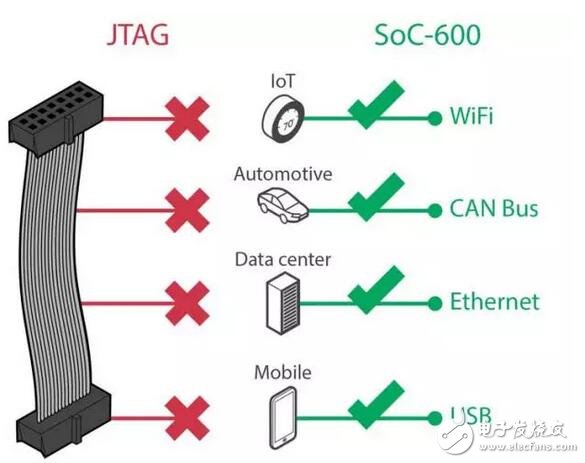ARM announced the launch of the CoreSight SoC-600 next-generation debug and tracking solution on March 16. The new technology can be debugged and tracked via functional interfaces such as USB, PCIe or wireless, reducing the need for hardware debug detectors while increasing data throughput.
Today's world is becoming more interconnected and the product development cycle is continuing to shrink. Companies are constantly looking for new ways to get products to market faster and improve their products throughout their lifecycle, from production to manufacturing to remote access. The launch of the CoreSight SoC-600 helps designers find the root cause of problems faster, reduce the number of iterations, reduce project risk, and reduce time to market. In addition, it provides superior system visibility for original equipment manufacturers (OEMs) and developers throughout the life of the device for continuous development and optimization.

In the past, system-on-chip (SoC) debugging and tracing relied on dedicated, standardized external interfaces to allow devices to access external debuggers, most commonly through JTAG (IEEE-1149.1) and Serial Wire Debug. However, because these interfaces are rarely left in the finished device, debugging with these interfaces in the prototype phase of the product is often limited.

To escape the reliance on such standards, the CoreSight SoC-600 implements the latest ARM debug and trace architecture to help developers with high-throughput tracking and on-site debugging through existing functional interfaces.
STMicroelectronics was one of the first companies to receive a CoreSight SoC-600 license. Fabio Marchi, vice president of automotive and discrete components division and general manager of automotive digital division at STMicroelectronics, said, "The ARM CoreSight SoC-600 helps STMicroelectronics significantly increase the output bandwidth of next-generation automotive microcontrollers for debug and tracking, especially in powertrains with soaring performance requirements. Advanced Stability Control and Advanced Driver Assistance (ADAS). This new tracking and debugging technology helps OEM partners accelerate fault identification, reduce risk and cost, and monitor the lifecycle of the entire product while developing interconnected products. ."
Stephan Lauterbach, general manager of Lauterbach GmbH, said, "The more complex the design of system-on-chip, the higher the demand for system visibility, which has pushed the market for the need for gigabit-level link debugging and tracking. With the ARM CoreSight SoC-600, our debug and trace tools now enable developers to remotely debug and analyze firmware, significantly reducing total cost of ownership and enabling more remote services."
MPPT Solar Charge Controller,MPPT Charge Controller,MPPT Solar Charger,MPPT Solar Regulator
Easun Power Technology Corp Limited , https://www.epinverter.com